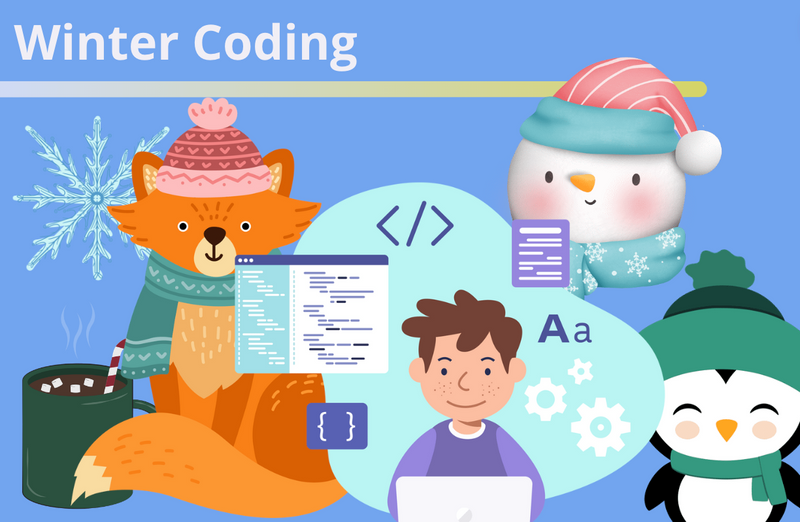In today’s post, we’ll cover a variety of Python exercises for kids. We find that students learn best by doing, and thus it is vital to give your children worthwhile challenges to keep them engaged. Targeted practice on Python skills also helps your students learn faster, and retain what they learn.
We selected a variety of high-quality coding challenges that are appropriate for different levels of Python skill. All these exercises require students to use one or more fundamental Python concepts, practicing key skills, and creative thinking. Many of these kids coding questions have multiple solutions; encourage your student to find more than one! For even more fun check out our live online expert-led free Python coding class, designed by professionals from Google, Stanford, and MIT.
Discover the best Python exercises for kids
Listed below are some of our favorite Python challenges. The questions will increase in difficulty, so newer Python students may wish to start in the first section, while more advanced coders may jump ahead.
Explore Python exercises for beginners
In this first section, we will cover Python exercises for beginners. These problems are a great entry point into Python programming, or can serve as warmups for more involved challenges.
1. String Methods Practice
One of the most common, fun, and instructive types of coding exercises is manipulating strings. Coding with strings allows students to practice different methods, operations, and many other skills. The exercise above asks students to return the word aardvark if their chosen word starts with the letter ‘a’.
2. Function Practice
All successful coders use functions consistently. Functions allow programmers to write modular code that can be executed on demand and with a variety of different conditions. In this function exercise, students practice creating a simple function that takes numeric inputs.
3. Conditional Practice
Another key coding concept that all students should know is conditionals, also known as if/else statements. For this exercise, students will have to combine string methods and conditional flow statements to determine if a string has an even or odd number of letters.
4. Loops Practice
Loops are useful for writing code that must repeat. They have a wide range of applications, and are one of the trickier core concepts of programming. Here, students practice using loops to write a simple search algorithm.
Discover fun Python questions for beginners
Next up, we have some good Python questions for beginners. These questions will push your student’s Python abilities a little more, and may require multiple Python concepts.
5. Area of Triangle Beginner Challenge
One of the biggest applications of coding is for solving math problems. In this exercise, students practice writing a function that calculates the area of a triangle using its base and height. As an extension, ask your students to create more functions that calculate the areas of different shapes - or even better, a single function that can be used to calculate the area of a specified shape.
6. Arrays Beginner Challenge
While we learn how to count at an early age, counting problems can be one of the tougher challenges for a novice coder. In Arrays, students are asked to combine conditionals, loops, modular math, or other coding tools to count the number of even integers in an array.
7. Dictionaries Beginner Challenge
For all our Star Wars fans out there, this next challenge presents a fun application of dictionaries. Dictionaries store information as key/value pairs, and can be used to link information. Students will create a dictionary that can be used to fill in the phrase, “Luke, I am your ________” given the person’s relationship to one of our favorite Star Wars heroes.
Try fun Python challenges
For students who are confident in their fundamentals and would like to push their skills, we recommend these Python challenges.
8. Number Array Challenge
There are several ways to accomplish this challenge, which requires students to find the missing number in an array. This exercise presents a good opportunity for coders to develop multiple methods for solving the same problem.
9. Cat Dog Challenge
At first, this challenge might seem simple - check to see if a string contains the word ‘cat’ and the word ‘dog’ the same number of times. There are some tricky tests that your code must pass, however, making this a worthy string challenge for your student.
10. Big Difference Challenge
In Big Difference, students must write code that takes an array and returns the difference between the largest and smallest numbers in the array. This challenge can require the use of many fundamental coding concepts, and requires students to think creatively about their approach.
Enjoy Python exercises for kids and teens
We hope you enjoyed these some fun, engaging Python exercises. These mini-projects can help build Python fluency, and are great ways to get your student problem solving.
If you enjoyed these challenges and would like to work on full-scale Python projects, we recommend signing up for the best Python classes for kids, including our Python for AI series of classes, which cover advanced topics and involve longer, more involved projects.
Up next, for even more activities to build your skills, explore fun Python projects for kids.
Written by Sarah Rappaport, who graduated from Northwestern University with undergraduate and graduate degrees in engineering and music. She's now working on a masters in data with Georgia Institute of Technology. She taught math and computer science with Teach for America for two years, and now works as a Systems Engineer.




